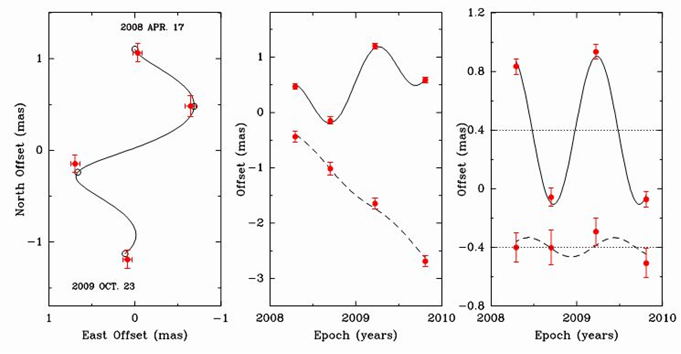
Figure 1. Parallax and proper motion data and fits for G12.89+0.49. Plotted are position offsets of the G12.89+0.49 maser spot at VLSR = 39.8 km s−1 relative to the background source J1825−1718. The expected positions from the parallax and proper motion fit are indicated by open circles (from Xu et al. 2011).
Accurately determining the spiral structure of the Milky Way is a difficult task. In principle, kinematic distances can be used to construct the spiral structure of the Galaxy. However, recent work on parallax and proper motion measurements has shown that kinematic distances can be affected by large uncertainties. Relying solely on kinematic distances, one cannot accurately determine the location of spiral arms. A more secure method of distance measurement is required to reconstruct the Galactic spiral structure and its three-dimensional motion. Recently, CH3OH 12 GHz masers have been used as astrometric targets to measure the trigonometric parallaxes and proper motions of massive star-forming regions. As part of that large project, in this paper Prof. XU Ye el al. present the results of the parallax measurement campaign toward G12.89+0.49, G15.03−0.68, and G27.36−0.16.
The observations were carried out with the Very Long Baseline Array (VLBA). G12.89+0.49 and G15.03−0.68 were observed at five epochs (VLBA program BR129A): 2007 October 18, 2008 April 17 and September 13, and 2009 March 23 and October 23. G27.36−0.16 was observed at four epochs (VLBA program BR129C): 2007 October 27, 2008 April 24 and October 31, and 2009 April 16. For all these sources, the emission is dominated by a single feature at the LSR velocity. Figure 1 reports the positions of the emission in the reference maser channel (relative to the background source J1825−1718) as a function of time and the parallax fit. The large declination errors of the parallax fit are probably caused by residual phase errors due to the combination of the large maser–calibrator separation (3.◦3) and the low maser declination. For two sources, the derived distances are accurate by better than 10%: kpc for G12.89+0.49 and kpc for G15.03−0.68. For the source G27.36−0.16, the derived distance is affected by a large uncertainty: Kpc. Their precise absolute positions place the methanol masers near the center of active regions of high-mass star formation, as traced by molecular hot cores, ultra-compact HII regions and/or dust condensations, or a combination of these.
The work by XU Ye (corresponding author), et al., accepted by the Astrophysical Journal, has been published online (http://iopscience.iop.org/0004-637X/733/1/25/).




